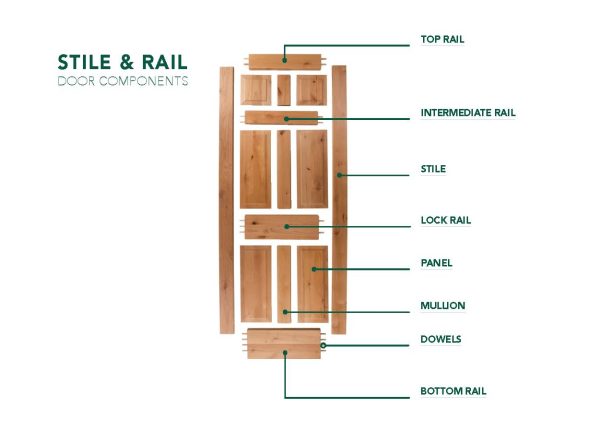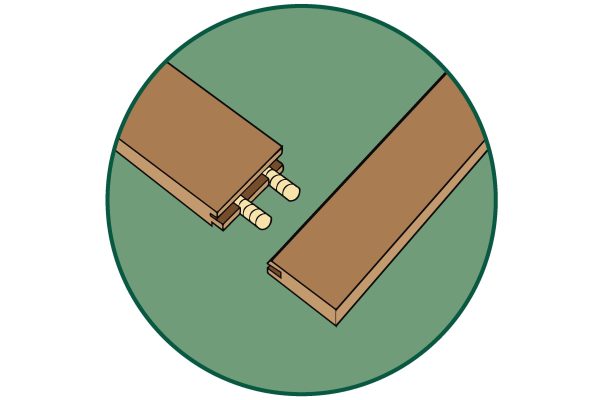Breaking Down Doors: Stile and Rail Doors
Allow me to break down the parts that make up our wood stile and rail doors and why this construction is superior to its competitors.

Top rail
This is the horizontal rail that is the top frame of the door and connects the stiles on each side and panel/s below.
Intermediate rails and mullions
These are rails built in between the top and bottom rails, including the lock rail. Intermediate rails are not used in hollow core or solid core construction, which is another reason wood stile and rail doors are much sturdier than moulded and flush door options.
Lock rail
This is a horizontal rail that is situated between the vertical stiles at the same height as the lockset for hardware.
Stiles
These are the vertical components on each side of the door that join the rails with dowels.
Panels
Panels can be raised or flat, and are set into the frames of a door. Panel designs are customizable, so you can still achieve the look you want without compromising on quality.
Bottom rail
Same function as the top rail, except this horizontal rail sits at the bottom of a door to connect the vertical stiles on each side and panel/s above.
Dowels
Dowels are used for making strong and tight joints where rails meet the stiles for ultimate strength and durability. In addition to the strength of the dowel construction, glue is also applied in the dowel bore for an even stronger bond. This is a key differentiator from hollow core doors, where the skin or mould is literally glued together with only spacers in between each skin.

As you can see, the name stile and rail doors literally comes from its composition. So now that you can see why stile and rail doors are superior, in my next post, I’ll dig into the benefits of solid wood doors as it relates to your home. In the meantime, browse our collection of stile and rail doors on the Woodgrain Doors website.